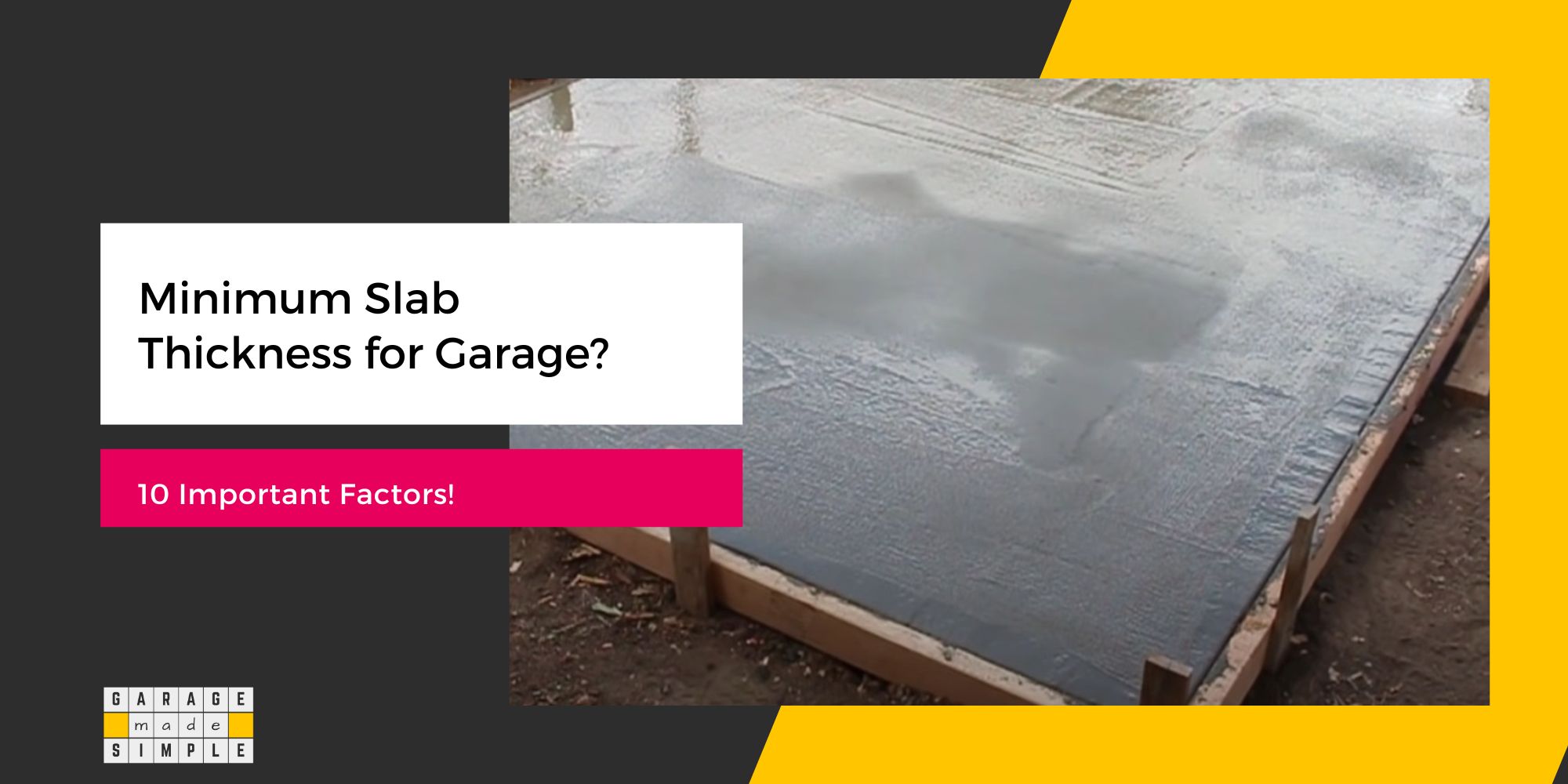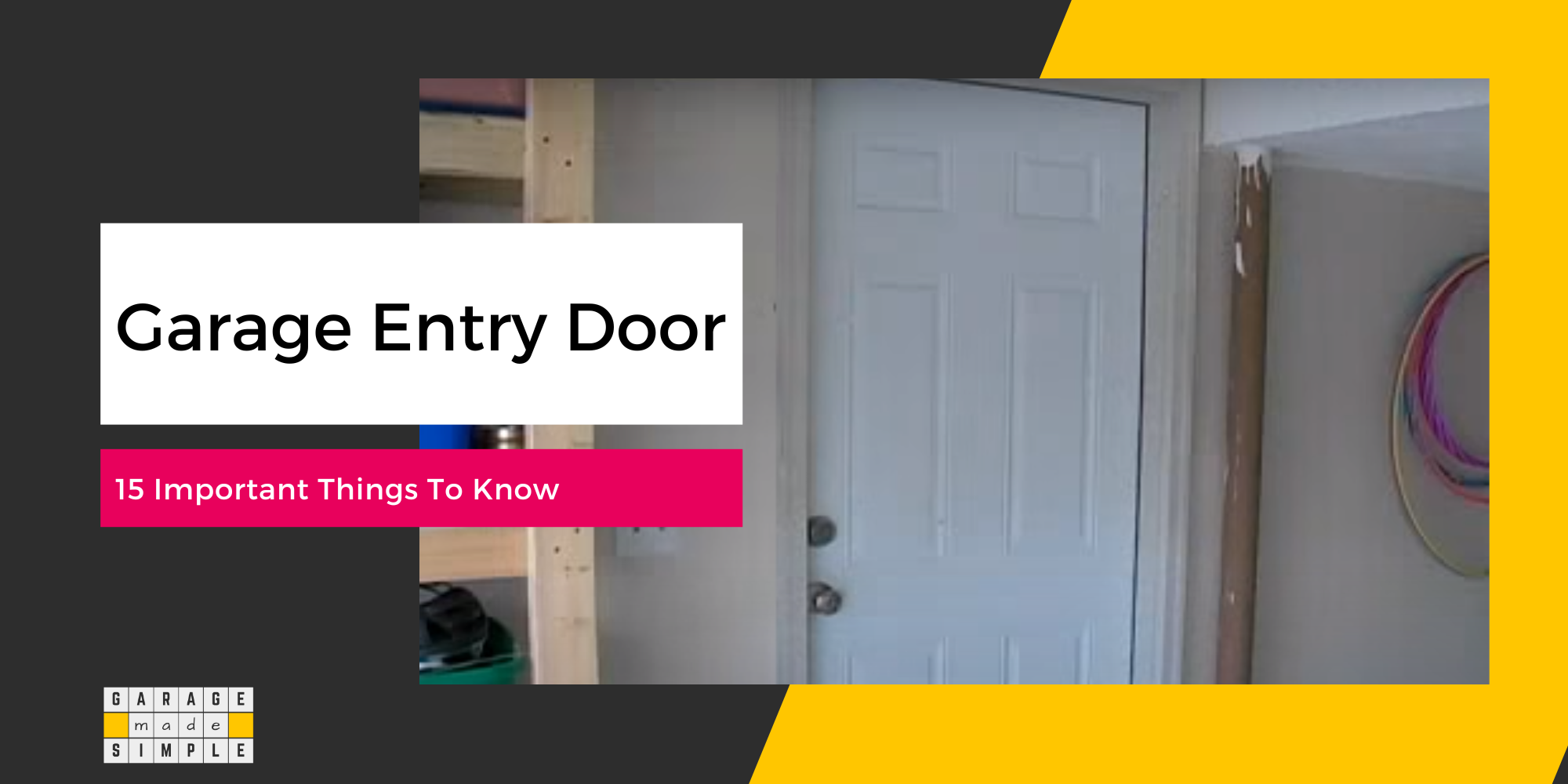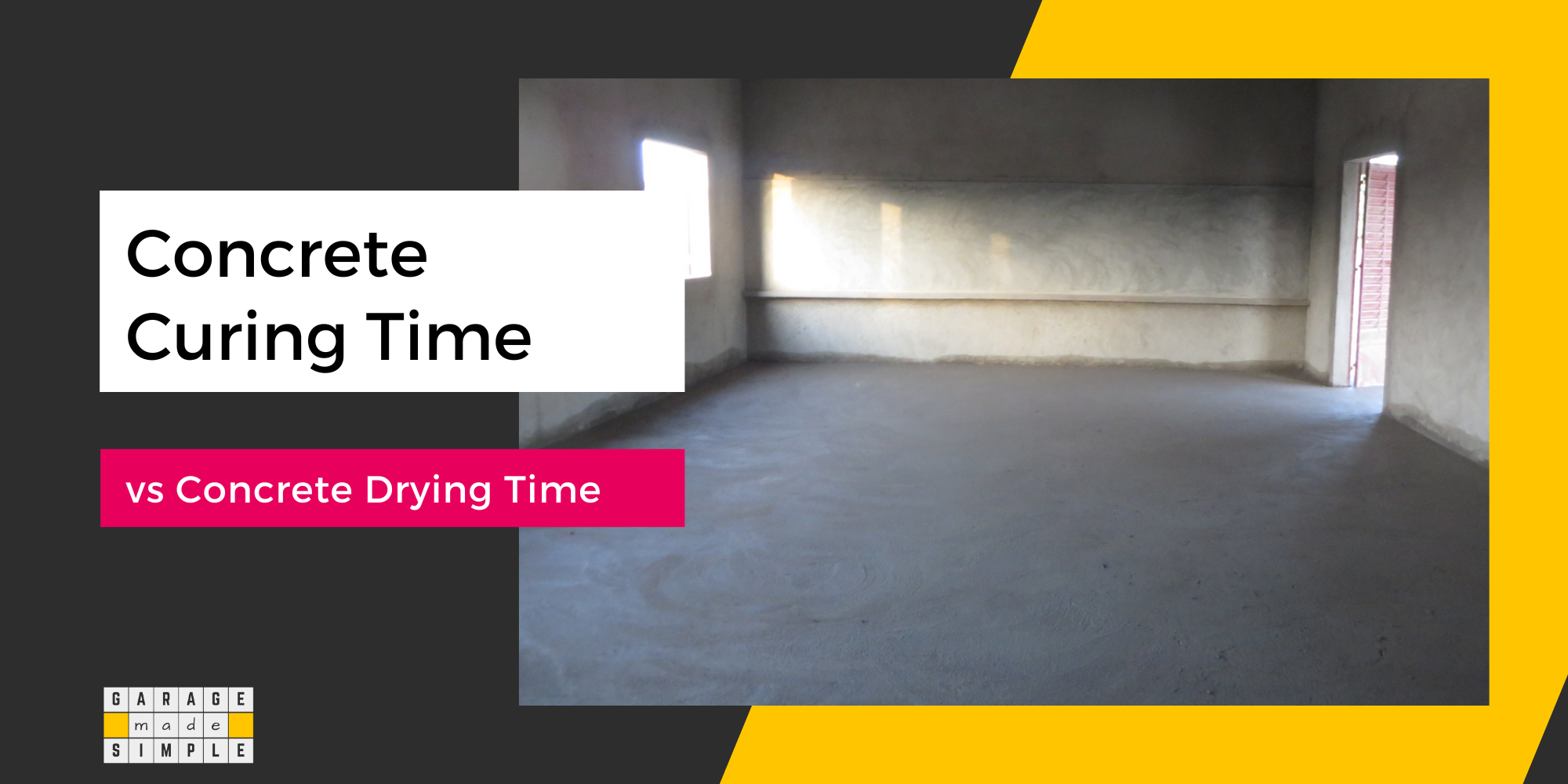Are Garage Steps into the House Mandatory? Truth or Myth? Information Updated
As an Amazon Associate, I earn from qualifying purchases.
Key Takeaways: Garage Steps into House
- Garage steps into house are not mandated by the 2021 IRC.
- The garage floor does not have to be lower than the house floor but must slope towards a drain or the garage door to divert water away from the house.
- Garage entry doors between the garage and the house must be fire-rated, self-closing, and solid wood or steel.
- Common myths about gas leaks, carbon monoxide, and flooding often influence the decision to have lower garage floors.
- Wheelchair access and convenience are important reasons to keep the garage floor at the same level as the house.
Must You Have Garage Steps Into the House?
Are you planning to build your house with an attached garage? What should the garage floor level be? Can it be at the same level as the main house? Does it have to be lower? If so, are garage steps into the house mandatory by code?
These are difficult questions, but don’t worry as this article will address all of them and then some!
To begin with
The 2021 International Residential Code (IRC) does not mandate garage steps into the house. There is no code that the garage floor must be lower than the house.
As per IRC code, a garage floor should slope towards a drain or the garage door. Compliance with this code ensures that water flooding or gas leaks will be diverted from the main house anyway.
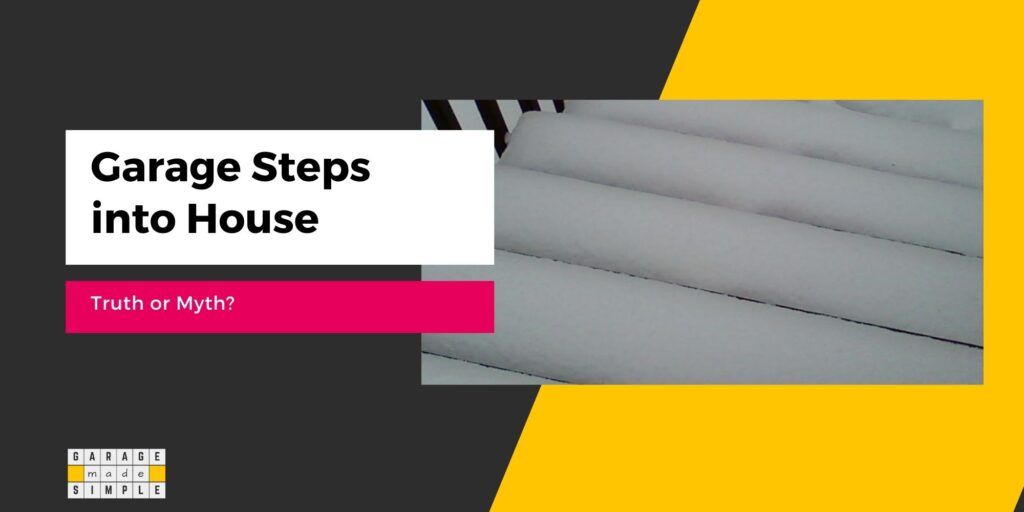
Keeping the garage floor level below that of the house is an old practice that refuses to die.
The decision to have the garage flower lower than that of the main house should be dictated only by your preferences & needs, subject to approval from the local building authority.
Compliance with Local Building Code
The only caveat is that, at times, the local building code may have a requirement beyond the one stated in the International Residential Code. So, please check with your local building authority and act accordingly.
Any residential construction requires a “permit to build” from the local authorities. Construction without a “permit to build” is non-compliance with local laws and can get you into all kinds of trouble.
In this post I will explain the different sections in the 2021 International Residential Code (IRC) that apply to garage floors, garage entry doors, etc. I will then explain the pros & cons of having or not having garage steps to the house.
I will refer to Chapter 3 Building Planning of The 2021 International Residential Code (IRC) Version November 2021, the latest update made available on the internet.
Does a Garage Floor Need a Slope?
A garage floor needs to have a slope to comply with Section R309.1 of the 2021 International Residential Code (IRC). The exact wordings are:
Garage floor surfaces shall be of approved noncombustible material. The area of floor used for parking of automobiles or other vehicles shall be sloped to facilitate the movement of liquids to a drain or toward the main vehicle entry doorway.
The folks at IRC have given lot of thought to incorporating Section R309.1 in the Code. Safety is their prime concern. The giveaways are “noncombustible material” and “liquids”, not water, used in the wording.
Your garage is primarily designed to park automobiles. Leaks and spills of “combustible liquids” such as gasoline and motor oil are a distinct possibility. A garage floor that slopes towards the garage door or drain will carry the flammable liquids away from your house.
In essence, the garage slab slope prescribed in the code is the safety feature. It is not necessary to keep the garage flower at a lower level.
Section R309 deals with “Garages and Carports” and has four subsections. None of them, have any stipulation on the garage floor level in relation to the house floor level.
Building Code for a Garage Entry Door to the House
Another safety feature that the 2021 International Residential Code (IRC) has incorporated, is the sections pertaining to the “opening between the garage and the house”. The section on the Garage Entry Door is worth noting.
The Garage Entry Door between the garage and the house must comply with Section R302.5.1 of the 2021 edition of the International Residential Code (IRC). The exact wordings are:
R302.5.1 Opening protection: Openings from a private garage directly into a room used for sleeping shall not be permitted. Other openings between the garage and the residence shall be equipped with solid wood doors not less than 1-3/8 inches (35 mm) in thickness, solid or honey-comb core steel doors not less than 1-3/8 inches (35 mm) thick, or 20 minute fire-rated doors equipped with a self-closing or automatic-closing device.
The important safety points to note here are:
- The door must be fire-rated
- The door must be self-closing
From a safety point of view, once Section R302.5.1 of IRC is complied with, it does not matter whether the garage floor level is below the house floor level, or not.
Section R302 of the IRC deals with Fire Resistant Construction. Section R302.5, deals specifically with Dwelling-garage opening and penetration protection. There are three sub-sections under this but they do not concern the garage floor level.
Why Are Garage Floors Lower Than the House? Busting a Few Myths!
The belief that the garage floor should be lower than the house floor and that garage steps should lead up to the house is based on the old building codes.
The old code required that the floor of an attached garage must be four inches lower than the floor level of the house.
Many contractors insist on following this practice, even though the code no longer requires the attached garage floor to be lower than the house floor.
Maybe it made sense in the old days, but there is no such code today. Now it has to do more with the lack of information and the perpetuation of myths!
Let us look at some of those myths:
Myth #1: Gas Leak
The Myth: You need the garage floor to be lower than the house so that leaking gas from the car does not get into the house through the garage entry door. And that is why you need steps.
The garage floor should slope towards a drain or the garage door as per IRC Section R309.1. The gas from the leak will flow towards the drain or the driveway, not towards the house.
A full tank of gas in a standard car is 15 gallons (3 buckets of 5 gallons); the same as 2.40 cubic feet. A standard 1-car garage has a floor area of 480 square feet (20’X24′).
So even if the 15 gallons of leaked gas could not drain out, it would pool up to a height of just around 1/16th of an inch on the garage floor.
Remember the garage entry door should be self-closing as per IRC Section R302.5.1.
So, do you think, garage steps leading to the house are really necessary to prevent leaked gas from entering the house?
Myth #2: Carbon Monoxide
The Myth: What if I left my car idling and the deadly carbon monoxide gas crept into my house through the garage entry door if there were no steps?
Carbon Monoxide is a “killer” gas that is part of the exhaust emissions from a car.
Carbon monoxide (CO) is a poisonous, colorless, odorless and tasteless gas. Although it has no detectable odor, CO is often mixed with other gasses that do have an odor. So, you can inhale carbon monoxide right along with gasses that you can smell and not even know that CO is present.
Source: OSHA Fact Sheet
Carbon Monoxide can be fatal as it deprives the heart of oxygen. In a residential setting, Carbon Monoxide can cause you to lose consciousness and suffocate while you are asleep.
Carbon Monoxide is heavier than air, so it stays close to the garage floor. It could drift into the house through the garage entry door bottom.
Keeping the garage floor level lower than the house will certainly help in preventing this from happening.
However, Section R315.2.1 New Construction of the 2021 edition of the International Residential Code (IRC) has incorporated the requirement of installing carbon monoxide alarms. The exact wordings are:
For new construction, carbon monoxide alarms shall be provided in dwelling units where either or both of the following conditions exist: The dwelling unit contains a fuel-fired appliance or the dwelling unit has an attached garage with an opening that communicates with the dwelling unit.
The right amount of air circulation is important for safety, physical health, and mental well-being.
It is so important that ANSI/ASHRAE Standard 62.2-2019 describes the minimum requirements to achieve acceptable Indoor Air Quality (IAQ) via dwelling-unit ventilation, local demand-controlled exhaust, and source control.
Incorporating well-placed vents in an attached garage can help exhaust fumes and toxic gasses. Please check my earlier blog post Why Have Garage Wall Vents? (7 Important Reasons You Need To Know!).
To summarize
- Having the garage floor level below that of the house will prevent carbon monoxide from creeping into the house from under the garage entry door. However, to the best of my knowledge, this is not required by any international code. Please double-check with the local building code authorities.
- Irrespective of the garage floor level you must install a carbon monoxide alarm to comply with IRC Section 315.2.1
- Irrespective of the garage floor level you must ensure a minimum acceptable IAQ to comply with ANSI/ASHRAE Standard 62.2-2019
Myth #3: Flooding
The Myth: What if my garage flooded and the water entered my house through the garage entry door if there were no steps to contain the water in the garage?
The garage floor should slope towards a drain or the garage door as per IRC Section R309.1. The drain system should have the drainage capacity to clear any flooding in the garage.
The drain system will be able to handle water from snow melt, car wash, and plumbing leaks.
If you expect torrential rains and heavy flooding in your area, you need more innovative water diversion provisions. Keeping the garage floor lower than the house is a partial solution at best.
It is not a great solution too as stuff in your garage will get damaged by the flood water.
When is a Garage at the Same Level as a House Better?
There are a few occasions when you wish your garage floor was at the same level as the main house.
Wheelchair Access: This tops my list. Do you or a member of your family require a wheelchair for mobility? The importance of having the garage at the same level as the house is self-explanatory.
Grocery Shopping: One of the benefits of having an attached garage is that it is convenient. But I doubt you enjoy climbing a few garage steps to get into the house while you are struggling with several bags of groceries. Possibly with a kid or two in tow!
The alternative would be to build a ramp, but ramps can get slippery when wet.
Should the Garage Floor be Lower than the House Floor?
To summarize the above post:
- 2021International Residential Code does not mandate it
- Most Local Building Codes follow the IRC. But some may not. You need to check.
- The garage floor must be sloped as per IRC Section R309.1
- The garage Entry Door must be self-closing as per IRC Section R302.5.1
- A Carbon Monoxide Monitor must be installed as per IRC Section 315.2.1
- Minimum Acceptable IAQ must be ensured as per ANSI/ASHRAE Standard 62.2-2019
- Prevent garage and house flooding by building an appropriate drain system
You may decide on the level of your garage floor, in relation to the level of the house floor based on your preference & need, subject to approval from the local building authority.

How to Build Garage Steps Into House: A Step-by-Step Guide
Let us say you have decided that your attached garage floor will be a few feet lower than your house, then you need to build garage steps leading up to the garage entry door.
Here is a simple, step-by-step guide:
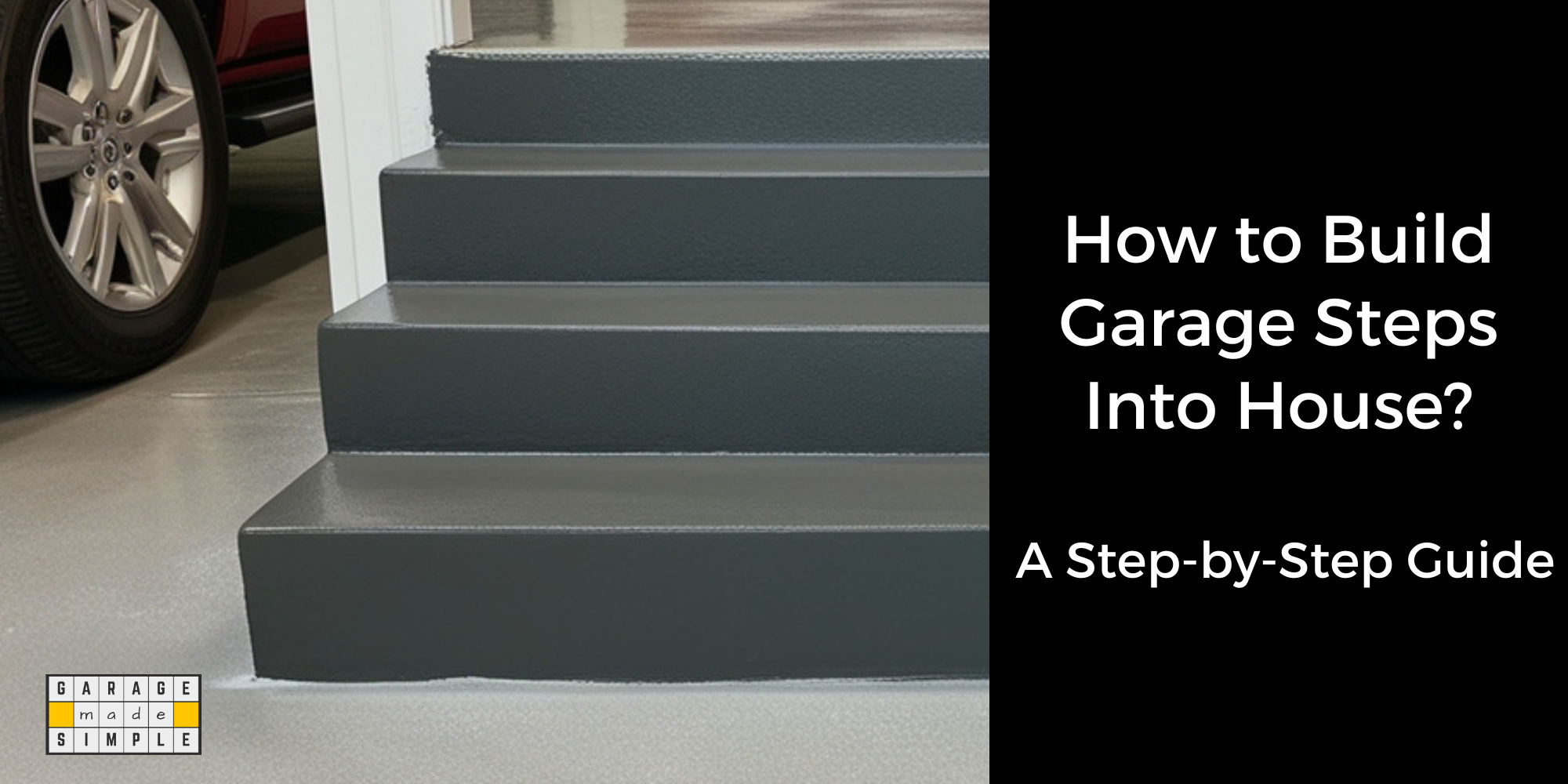
A Step-by-Step Guide for How to Build Garage Steps Into House
Step 1: Planning Your Garage Steps Project (Dimensions)
Careful planning will ensure your garage steps building project is completed without a hitch.
Measure the height and width of the space between the garage floor and the entryway door to the house. This determines the “rise” (height of each step) and “width” (width of each step).
The standard rise for stairs is between 7 and 8 inches, while the width of the stairs should ideally match or exceed the width of the garage entry door for comfort and accessibility.
However, check your local building codes for garage steps to ensure compliance.
Step 2: Choosing the Right Materials for Garage Steps
The garage step’s durability, safety, and aesthetics will depend on the material used. Here’s a breakdown of popular choices:
Wood: Wood is a popular, budget-friendly choice for DIY garage steps due to its easy handling and versatility. Opt for treated lumber to resist moisture and prevent rot
Concrete: If you prioritize durability and a long-lasting option, concrete garage steps are ideal. Concrete withstands heavy traffic and requires minimal maintenance.
Metal: Metal steps are sleek and extremely durable, making them a great aesthetic choice. However, metal garage steps can be slippery, so add non-slip treads.
Step 3: Planning Your Garage Steps Project (Tools & Materials)
Planning your materials and tools will prevent delays and help you stay on budget.
Have a tape measure, carpenter’s level, saw, drill, and screws on hand, along with materials like wood, concrete, or metal, depending on your chosen design.
Step 4: Building the Framework of the Steps
The framework provides stability for your garage step construction. Start by marking and cutting stringers according to the height and depth measurements. You’ll need at least two or three stringers for support, ensuring each is level and uniform.
Secure the stringers to the garage floor with anchors or bolts, and attach the top to the entryway framing.
Add horizontal braces between the stringers for extra stability. This solid framework ensures your DIY garage steps can safely handle frequent use.
Step 5: Installing and Securing the Step Treads
Once the framework is set, install the treads for stable, safe garage steps. Select tread materials that match the framework—wood treads for wooden stringers, or concrete treads for concrete.
Secure the treads with heavy-duty screws for wood or adhesive/anchors for concrete, ensuring each step is level.
Check that the treads are evenly spaced and tightly fastened to prevent movement.
For added safety, consider a slight overhang on each tread to improve grip, creating DIY garage steps that are both durable and slip-resistant.
Step 6: Adding Handrails for Safety (Optional but Recommended)
Adding handrails to your garage steps enhances safety, especially for higher steps or households with children.
Choose a handrail material that complements your steps, like wood for wooden steps or metal for concrete.
Install brackets along the side of the steps, positioning the handrail between 34 to 38 inches above each tread for optimal support. Ensure the handrail is level and securely fastened to handle weight without wobbling.
Step 7: Finishing Touches for Durability and Safety
Apply a stain or sealant on wooden garage steps to protect them from moisture and dirt.
Similarly, a concrete sealant or epoxy can prevent surface wear for concrete steps.
Adding non-slip treads or grip tape enhances safety, particularly in wet or snowy conditions.
For a polished appearance, painting the steps with durable outdoor paint is recommended, using concrete-specific options for concrete and high-traffic suitable paint for wood.
Thank you very much for reading the post. I do hope you found it informative and useful.

